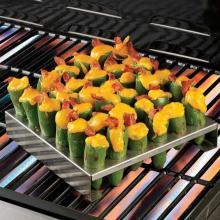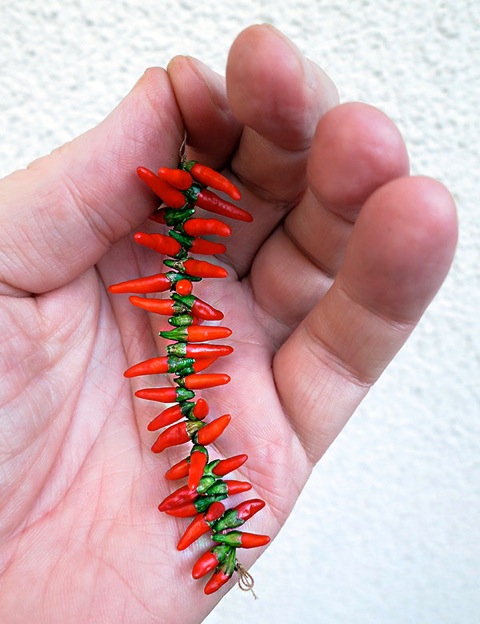While processing the chiles, be sure to wear rubber gloves to protect yourself from the capsaicin that can burn your hands and any other part of your body that it touches. Before roasting, cut a small slit in the chiles close to the top so that the steam can escape. Otherwise, the chiles can literally explode, ruining them for use in anything other than a stew.

Our favorite roasting method is to place the pods on the grill over a charcoal or gas fire about five to six inches from the coals. The pods will soon blister, indicating that the skin is separating. With tongs, turn the pods to ensure that they are blistered all over or they will not peel properly. Sometimes the chile pods will blacken slightly. This does not affect the taste as the blackening is on the skin, which will soon be removed. When roasting the chiles, stand upwind and be careful of the smoke: It can burn the eyes.
When the pods are thoroughly blistered, remove them with tongs and immediately wrap them in damp towels or place them in a plastic bag with damp paper towels for ten to fifteen minutes—this “steams” them and loosens the skins. For crisper, less cooked chiles, remove the pods from the grill with tongs and immediately plunge them into ice water to stop the cooking process. If properly blistered, the tough skin can easily be removed from the pod. The seeds are usually removed, but leave the stem on if you will be making stuffed chiles. At this point, the chiles can be prepared for use in the recipe or preserved by freezing.
Choose the form you want the chiles in—whole, in strips, or chopped. A handy way to put up chopped or diced chiles is to freeze them in plastic trays by making chile ice cubes. When frozen, they can be “popped” out of the trays and stored in a sealable plastic bag in the freezer. When making a soup or a stew, just drop in a cube. This eliminates the problems inherent in hacking apart a large slab of frozen chiles when you need just a couple of ounces.
Roasted and peeled green chiles can also be dried. String the chiles together, cover with cheesecloth and dry in a well-ventilated location. One ounce of this chile pasado (dried green chile) is equivalent to about ten fresh chile pods. Excess chile peppers can also be pickled or made into vinegars, oils, pastes, salsas, and sauces.
Latest posts by Mark Masker (see all)
- 2024 Scovie Awards Call for Entries - 07/07/2023
- 2024 Scovie Awards Early Bird Special: 3 Days Left - 06/29/2023
- 2024 Scovie Awards Early Bird Deadline Looms - 06/25/2023










